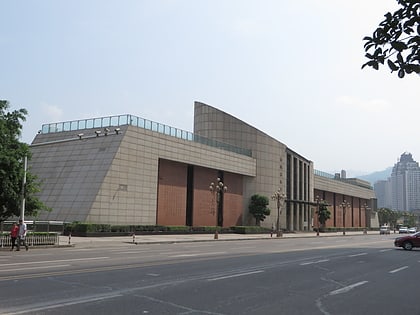Baiheliang Underwater Museum, Chongqing


Facts and practical information
The Baiheliang Underwater Museum, nestled in the city of Chongqing, China, is a remarkable testament to the country's rich historical and cultural heritage. This submerged museum, a first of its kind, offers visitors an extraordinary glimpse into ancient inscriptions and relics, all from beneath the waters of the Yangtze River.
Located within the Fuling District, the Baiheliang Underwater Museum was ingeniously constructed to protect and showcase the Baiheliang, or White Crane Ridge, an important archeological site that was submerged following the construction of the Three Gorges Dam. The ridge is renowned for its hydrological inscriptions, which have been used for more than a millennium to monitor the water levels of the Yangtze River.
The museum, which opened its doors to the public in May 2009, is an architectural marvel designed to provide an immersive, underwater experience without getting wet. Visitors can descend into a specially designed tunnel that takes them 40 meters below the surface. Here, glass walls separate them from the river, allowing an up-close view of more than 160 carved inscriptions and numerous ancient fish stone sculptures, which date back to the Tang and Song dynasties.
These inscriptions are not only artistic but also serve as historical records, with some detailing the effects of droughts and floods on the local population. The museum also features a range of exhibits, including artifacts discovered on the ridge before it was submerged, multimedia presentations, and models that explain the significance of the Baiheliang in understanding ancient Chinese hydrology.
Baiheliang Underwater Museum – popular in the area (distance from the attraction)
Nearby attractions include: Fuling Wujiang Bridge, Fuling Arch Bridge, Shiban'gou Yangtze River Bridge, Fuling Catholic Church.









